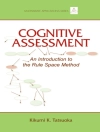The use of electroencephalography (EEG) to study the human mind has seen tremendous growth across a vast array of disciplines due to increased ease of use and affordability of the technology. Typically, researchers study how the magnitude of the waves changes over time or how the rhythm (frequency) of the waves changes over time. The Oxford Handbook of EEG Frequency is arguably the first book to comprehensively describe the ways to study how the frequency of the waves changes over time and how changes in frequency are linked to cognitive, affective, and motor processes. Consisting of 23 chapters written by leading authorities in the field, the book is separated into three sections, with the first focusing on the basics of EEG frequency research, linking frequency analyses to core components of EEG research with event-related potential (ERP) components and local field potentials (LFPs) in non-human animals. The second section looks at specific EEG frequency components that are commonly studied using traditional frequency bands of activity to study specific psychological processes. Finally, the third section explores EEG frequency analyses in special populations and altered states. Each chapter provides a diverse perspective on the topic, giving readers the opportunity to learn about a vast array of methods to conduct EEG frequency analyses, from ‘traditional’ to cutting-edge techniques, providing a comprehensive and in-depth overview of electroencephalography (EEG).
Edward Bernat & Philip Gable
Oxford Handbook of EEG Frequency [PDF ebook]
Oxford Handbook of EEG Frequency [PDF ebook]
ซื้อ eBook เล่มนี้และรับฟรีอีก 1 เล่ม!
ภาษา อังกฤษ ● รูป PDF ● หน้า 632 ● ISBN 9780192653369 ● บรรณาธิการ Edward Bernat & Philip Gable ● สำนักพิมพ์ OUP Oxford ● การตีพิมพ์ 2022 ● ที่สามารถดาวน์โหลดได้ 3 ครั้ง ● เงินตรา EUR ● ID 8481113 ● ป้องกันการคัดลอก Adobe DRM
ต้องใช้เครื่องอ่านหนังสืออิเล็กทรอนิกส์ที่มีความสามารถ DRM












